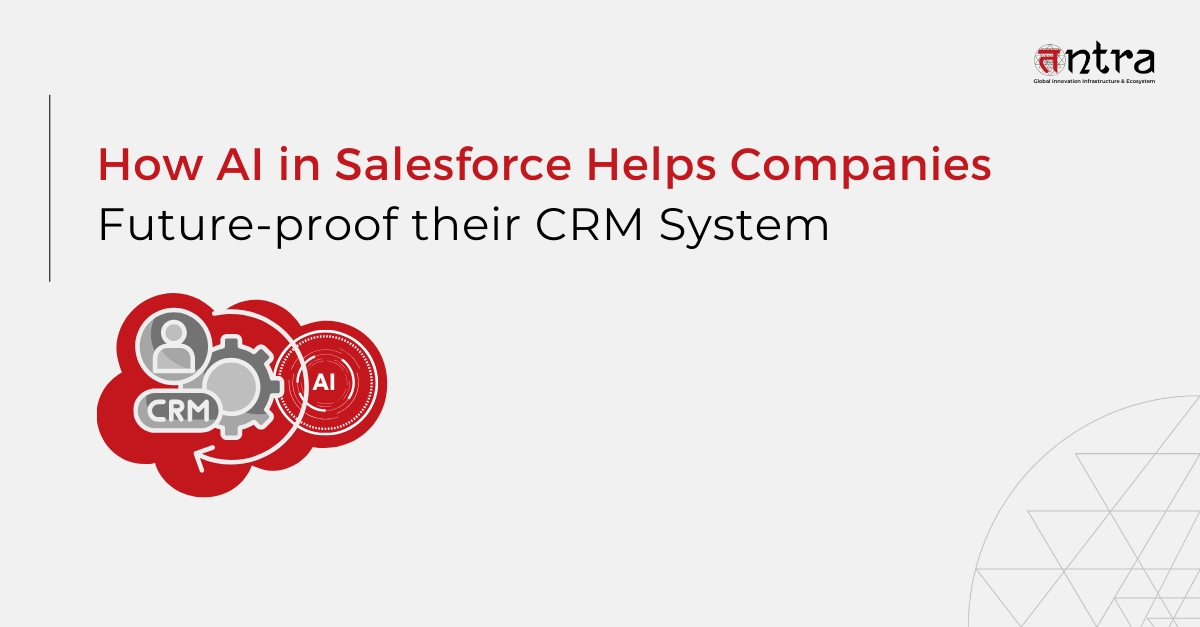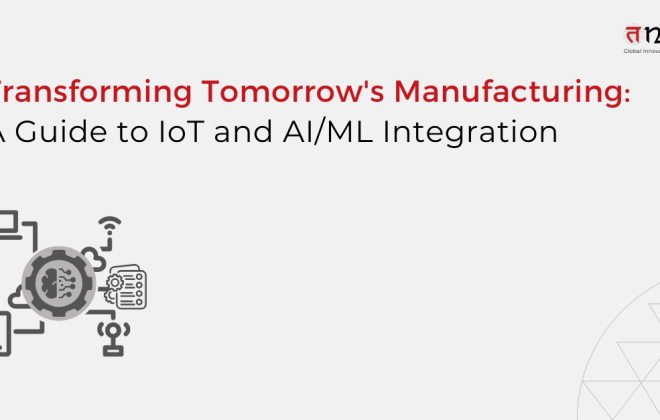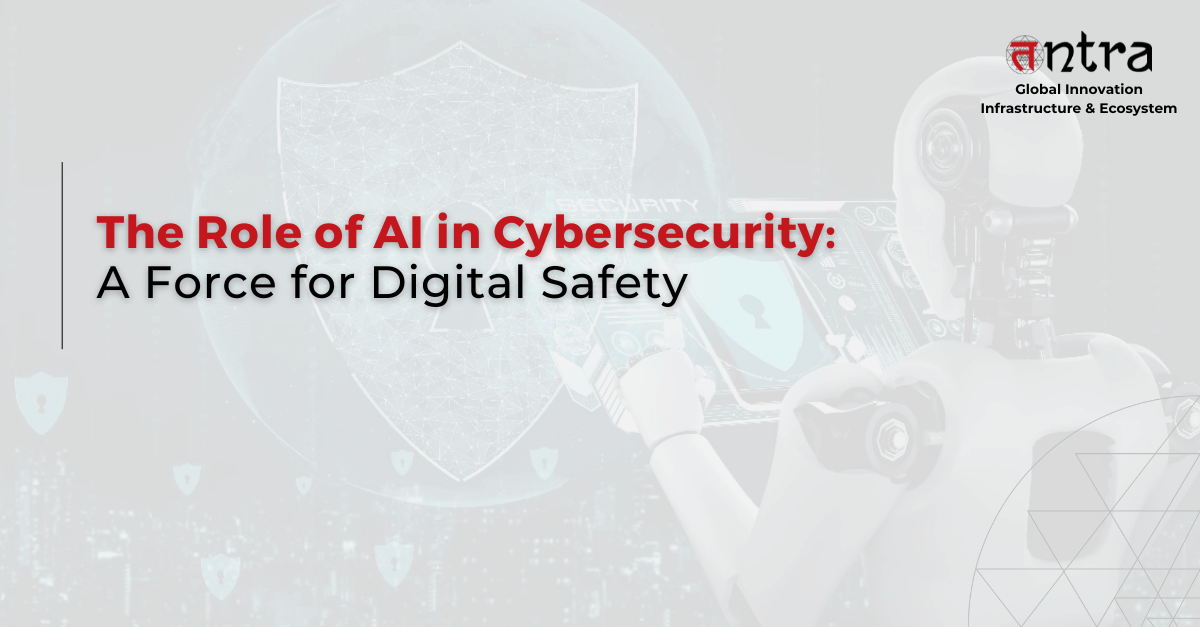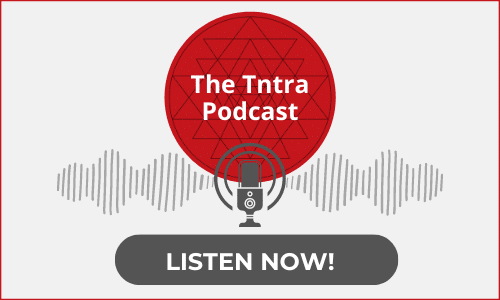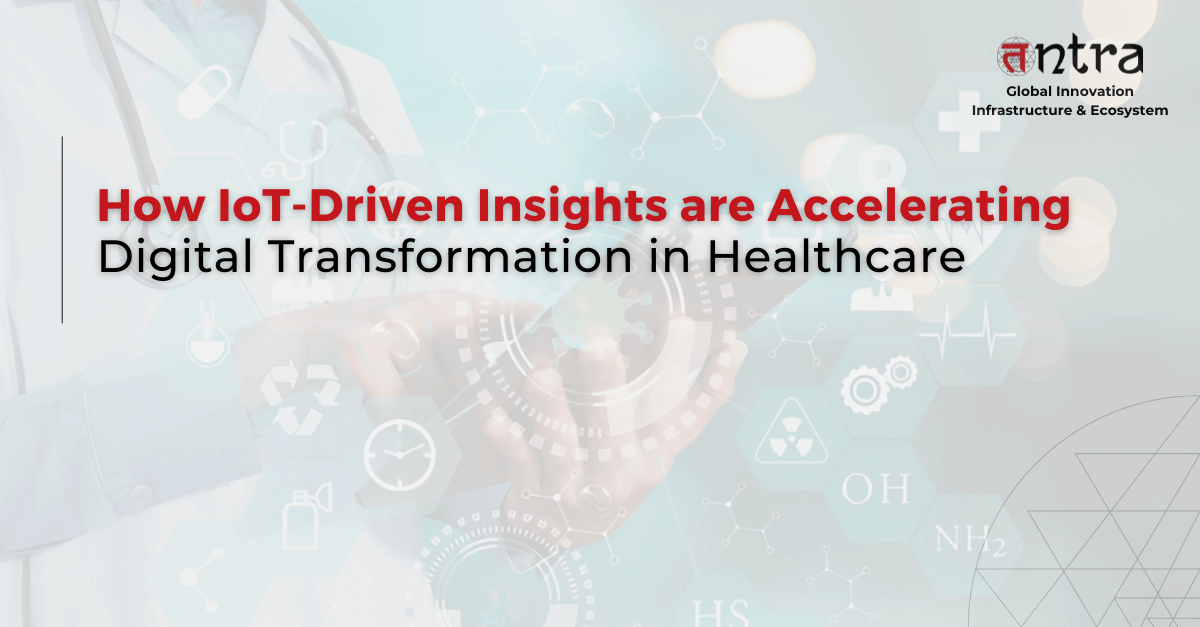
How IoT-Driven Insights are Accelerating Digital Transformation in Healthcare
Table of Contents
ToggleTraditionally, hospitals used manual processes and siloed systems to monitor patient data, medical equipment, and supplies. But times have changed, and we are now residing in an epoch where IoT in healthcare is extensively ameliorating these systems. Imagine a future with sensors and devices collecting real-time data about patients, automating administrative tasks, and even predicting medical crises—this is not science fiction, this is happening today.
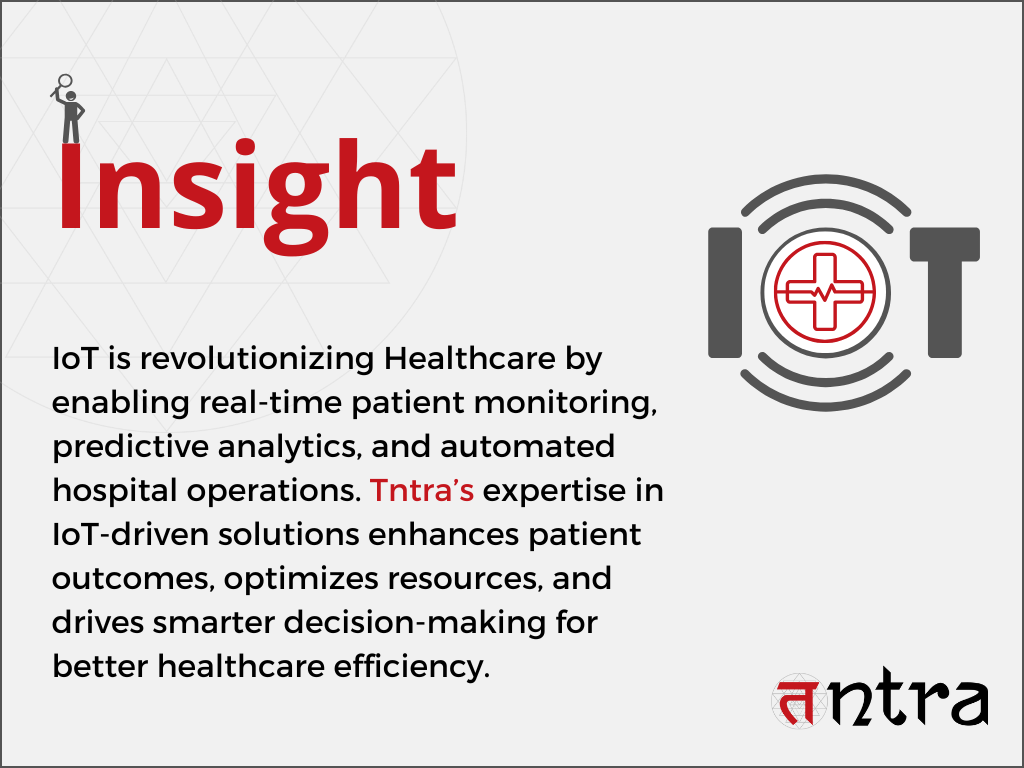
The Importance of Digital Transformation in Healthcare
The term Digital transformation in healthcare is being tossed around a lot these days. But what does it really mean? In effect, that means using modern technologies—including cloud computing, big data, AI, and IoT—to optimize all aspects of care delivery. Digitizing everything from patient records, to medication tracking only serves to make healthcare providers more efficient, save costs, and provide for better quality of care. And, yes, Healthcare IoT solutions are at the helm of this transformation, connecting the dots between devices, patients, and practitioners, in real time.
Leveraging IoT Data for Smarter Decision-Making in Healthcare
This opened a lot of doors, one of the most recent exciting developments being IoT-driven healthcare insights. But there is so much data they can collect in real time, from sensors on medical equipment to wearables that monitor vital signs to inter-connected hospital networks. These considerations extend beyond simple data gathering; they are literally informing patient care and administrative decision-making. For instance, say a bunch of patients are showing elevated heart rates — real-time analytics might signal to staff that something needs attention, allowing staff to intervene more quickly. It is this high level of responsiveness that is the essence of Smart healthcare technology.
How Connected Medical Devices Generate Actionable Insights for Patient Care
Let’s talk about devices. Connected medical devices are changing the game for health care delivery and monitoring. These devices allow clinicians to follow patients’ progress without being physically present, from smart insulin pumps to cardiac monitors that update a patient’s electronic health record (EHR) in real time. This is critical when patients are distributed among several wards or even at home. Connected patient care through IoT is making it possible for physicians to manage treatment plans and monitor patients remotely, easing the burden on hospital systems, and providing patients autonomy.
Optimizing Hospital Operations with IoT-Powered Real-Time Insights
When we talk about how IoT is transforming healthcare management, we are not talking about yet another bunch of fancy gadgets in the ICU. Smart shelves and RFID tags can help ensure that critical items — such as ventilators or certain drugs — are always in stock. Consider facility management, where IoT sensors placed throughout hospital rooms and other facilities are used to track temperature, humidity, cleanliness, and a myriad of other data points as those sensors feed into central dashboards. This holistic approach is precisely what’s driving IoT-powered hospital management solutions, and it’s changing how administrators plan, budget and allocate resources.
How to Stay Updated on Digital Transformation Trends in Healthcare
As we explore further, it’s important to point out some Digital transformation trends in healthcare are impacting the use of IoT:
- Telemedicine Expansion: We saw an uptick in virtual consultations (many of which may have been long-overdue), which drove the need for strong IoT infrastructures that have medical devices communicate from the patient’s house to the doctor’s office.
- AI-Driven Diagnostics: AI tools can comb through huge datasets produced by IoT devices to find patterns and make diagnoses faster.
- Blockchain for Security: To protect privacy, which is a major concern, some providers are experimenting with using blockchain to secure data transmissions between IoT sensors and hospital servers.
Each of these trends relies deeply on IoT technologies — from advanced connectivity solutions to sophisticated analytics tools.
Enhancing Patient Outcomes with IoT-Enabled Real-Time Data Analytics
Speaking of trends, one thing which cannot help but excite is IoT-enabled patient care. Just consider the next time you’re in a hospital. Rather than being strapped to a bed with dozens of wires, you might wear a comfortable patch that sends information about your vitals directly to your doctor’s tablet. This allows for fast response times and lower risk for errors. Moreover, Real-time healthcare data analytics with IoT implies that if something goes wrong — such as a sudden increase in blood pressure — then medical staff can step in before it’s too late.
Remote Patient Monitoring: How IoT-Generated Data Improves Care
Remote patient monitoring has been around for a while, but it’s definitely changing, thanks to IoT applications in remote patient monitoring. Patients with chronic diseases such as diabetes or heart disease can have their health metrics continuously monitored with wearable gadgets or implanted sensors. And these metrics are then transmitted to a centralized system where health-care professionals can track them. Alerts are triggered if anything looks abnormal, and patients can receive guidance on how to proceed. This reduces unnecessary hospital readmissions and enhances overall quality of care — a double win for patients and providers alike.
Hospital Automation: Using IoT Insights for Smarter Resource Management
As a patient walking into a hospital, it may be difficult to see the many processes that operate behind the scenes. For example, IoT-enabled hospital automation handles a myriad of tasks—from tracking surgical instruments through sterilization, to monitoring cold-chain storage for vaccines, to optimizing workflows of staff. For example, if there are too many patients in the ER, the automated system can deploy staff or resources from wards that are less busy so that no one waits too long. The outcome? A more effective, patient-focused health care system.
AI-Powered Healthcare: How IoT Data Enhances Predictive Analytics
IoT has already caused a stir in healthcare, but in particular, it’s the fusion of IoT & AI in healthcare analytics that’s breaking limits. Together, they’re forecasting diseases by looking at large sets of patients data and social determinants of health. They’re also helping in complex surgical procedures where robots are making adjustments on the fly. AI algorithms will grow in sophistication, but they can’t function without the constant stream of information that IoT devices will continuously feed them. A case built on this synergy is what we need for hyper-personalized medicine, improved patient outcomes, and cost-effectiveness in healthcare.
All these technologies work best when integrated seamlessly into a connected healthcare ecosystem. This ecosystem unites patients, providers, devices, and data platforms into a single digital ecosystem. From admission to discharge—and perhaps beyond—it is real-time, accurate data driving every step of patient care. The result? By reducing wait times, providing proactive care, and greatly improving the patient experience.
Choosing the Right IoT Development Partner for Healthcare Transformation
You may have some questions like: “This is nice, but where do I start? Finding an IoT development company that understands the nuances of healthcare from both clinical and technical perspectives is the very first step. This means you don’t just need coders; you need experts who understand things like HIPAA compliance, data security and the distinctiveness of medical workflows. If you are building a remote monitoring platform or a hospital automation system, a reliable partner could be a game-changer.
After finding the right partner, the next step is discovering the IoT development services they provide. These are generally including solution architecture, hardware integration, and data management and analytics. In healthcare, this translates to your development team having extensive experience with device interoperability — your new IoT platform should play nice with various medical devices and electronic health records.
How to Maintain Quality when Choosing IoT App Development Services
Creating an IoT solution for healthcare is not just about functionality but also about making it dependable, secure, and scalable.
IoT software development services require rigorous testing, including:
- Simulating real-life stress scenarios.
- Ensuring all data streams remain encrypted.
Zero margin for error exists when handling sensitive patient data, making compliance a critical factor.
Choosing a healthcare software compliance expert as a partner is essential.
From Concept to Reality: The IoT Development Process
The most effective solutions not only capture and process data but also present it in an actionable format for medical professionals.
After meeting software prerequisites, the next step is IoT app development services.
This phase involves defining system architecture and translating it into functional features such as:
- Real-time dashboards for instant monitoring.
- Alert notifications to flag critical events.
- Analytics modules to derive actionable insights.
Sometimes, out-of-the-box solutions don’t work—especially in the case of healthcare facilities that remain in silver-spoon G4s, with custom workflows and specialized clinical services. Fully customized IoT app development solutions can be your savior in such situations. You’ll get to innovate on everything from the user interface to the analytics algorithms. This guarantees that all functionality is perfectly matched with your organization’s objectives, be it the reduction of wait times, chronic disease management, etc.
Healthcare has its language, rules and challenges. This is precisely the reason why several organizations prefer a healthcare app development company solely focused on this specific industry. Most such companies have teams of clinicians, compliance experts and project managers fluent in the same language as hospital administrators and IT staff. This can accelerate development timelines, as well as remove costly misunderstandings.
How Healthcare Application Development is Revolutionizing Care
Consider how you envision your staff and patients engaging with IoT data. Maybe it’s a mobile app for the nurses that notifies them when an IV drip is hitting empty, or a web portal for patients to log metrics on post-operative recovery. Healthcare application development makes sure these user-facing platforms are not only functional but also intuitive — so that the technology only becomes an ally rather than a hurdle.
And as your IoT initiative matures, you may require more advanced capabilities —such as predictive analytics for patient admission rates or AI-based diagnostics. These are things that would use heavy-duty healthcare software solutions that would have to do complicated calculations, tie in with many data sources in the real time, and so on. Creating such systems can be tricky in their own right, but with the right approach, you’ll remain agile and responsive to changing healthcare needs.
Building Scalable Healthcare IoT Platforms with Software Engineering
At some point, your new IoT project transitions into core infrastructure. That transformation requires software product engineering solutions that ensure scale reliability. That encompasses microservices architecture, load balancing and other technical undergirding that allows your IoT platform to continue functioning seamlessly when usage surges in emergencies or national health emergencies.
Building a large-scale IoT healthcare platform is not an easy task. Working with a software product engineering company can provide you with the technical expertise and validated processes required. These are the kind of companies that focus on long-term product lifecycles, iteratively improving your platform based on real-world feedback, new regulatory standards, and, of course, evolving IoT tech.
Developing a Data-Driven Digital Transformation Strategy with IoT
All these IoT projects and software solutions fall under the greater umbrella of a digital transformation strategy. Consider it your north star—a roadmap indicating how types of tech investments ladder up to more abstract goals. Perhaps you embed a 30% reduction in average patient wait times or a 50% reduction in medication errors. Whatever your goals may be, connecting them to a clearly defined digital transformation roadmap is an important process to follow to help ensure that internal stakeholders are aligned and progress to your goals can be measured.
Unlocking Sustainable Growth with IoT-Powered Digital Transformation
IoT is only one part of the big picture to be focused on. Quite frequently you will require digital transformation services—such as consulting, staff training, and change management—to ensure that these new tools take hold. Technology is only as good as the people it uses, after all. Your digital transformation can barely take flight without investment in upskilling medical staff, cultural hedging and a supportive environment.
IoT and AI: The Future of Digital Transformation in Healthcare
The bottom line is that technology should make life easier, not harder. The best digital transformation solutions fit seamlessly into workflows, reduce friction, and empower clinicians to provide better care. These solutions can range from automated appointment scheduling to advanced analytics dashboards and can vastly enhance the operating models of healthcare organizations by creating a landscape where high-quality care is patient-centric, cost-effective, and scalable for the future.
The Future of Healthcare: IoT-Driven Insights for Smarter Decisions
IoT is more than a buzzword within healthcare; it’s a proven disruptor to enable modernization, agility, and improved patient outcomes. From IoT in health care tools that monitor necessary signs in real-time to specially-built systems developed through IoT improvement corporation, the opportunities are huge and exceedingly transformational. If you’re a hospital administrator deciding whether or not to make a big tech investment, or a clinician wondering what the next wave of digital tools will look like, now is the time to embrace IoT.
The key to success? Well, a well-considered digital transformation strategy, the best technology partners and the willingness to keep learning and changing. As you explore this exciting new landscape, consider asking questions, testing the waters with pilot projects and/or enlisting the help of experts in digital transformation services. As long as you keep your mind open to innovation and patient care at the forefront, you will soon find that IoT-powered insights allow healthcare to be more efficient, personalized and, dare I say, futuristic.
If you are looking for a software product engineering company, consider Tntra as the partner that can elevate your IoT game. Contact us today!
FAQs
What is the role of IoT in digital healthcare?
IoT provides a connected network of medical devices and systems, enabling real-time data collection and analysis. With this ongoing integration, healthcare professionals can monitor patients from far away, offer personalized care, and optimize hospital operations for better patient outcomes.
What is accelerating digital transformation?
Advances in cloud computing, AI-driven insights, and data analytics propel digital transformation. Moreover, escalating consumer demands for faster and easier services, as well as market pressure, push companies to embrace innovative solutions.
What is the role of IoT in digital transformation?
IoT is a game-changer by aggregating valuable information from connected devices and bringing it onto digital platforms. This real-time intelligence simplifies operations, enhances productivity, and facilitates data-driven decision-making in organizations.
How is IoT technology transforming the patient experience and improving healthcare outcomes in the long term?
IoT enables proactive care through real-time remote monitoring, personalized treatment, and timely intervention. In the long run, this minimizes hospital readmission, enhances patient engagement, and maximizes resource utilization, resulting in better healthcare outcomes.
What are 5 examples of IoT used in healthcare?
- Wearable health trackers for monitoring vital signs
- Smart insulin pens for diabetes management
- Remote ECG devices for cardiac management
- Connected inhalers for respiratory conditions
- Smart hospital beds that adjust to patient needs
What are the major impacts of IoT in the healthcare industry?
IoT enhances patient care, reduces costs, and enhances operational efficiency through real-time data sharing and analytics. It facilitates preventive healthcare, enhances resource utilization, and fuels innovation in the delivery of medical services.
What is an implementation of IoT for healthcare?
An example is remote patient monitoring solutions that continuously record patient vitals and transmit them to care teams. Healthcare professionals can intervene early when issues arise, making treatment more effective and minimizing the risk of complications.
